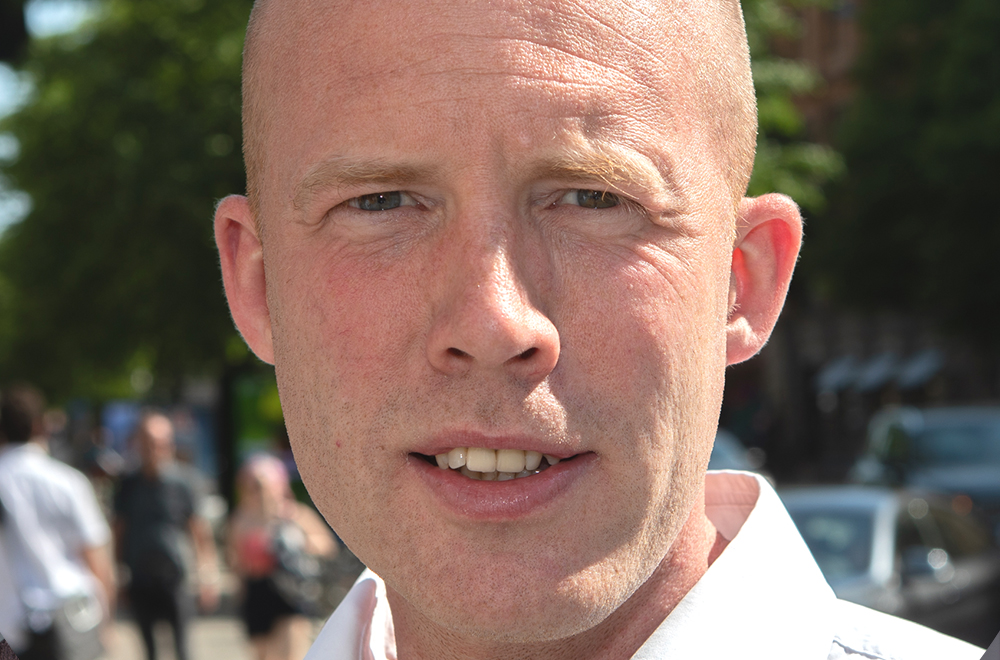By Jonas Wäingelin, NordicInvestor
Barnekow´s 15 year career in asset management started at the forex desk of SEB as a trainee in 2004. From there he joined the investment strategy department which services SEB´s private banking clients as well as foundations/endowments and retail clients through it´s office network.
“These types of clients were serviced in two ways; discretionary mandates and advisory services. I spent the last three years there leading the advisory team basically constructing model portfolios, investment scenarios and cases, primarily for the banks private banking clients.” Carl reflects.
After eight years he felt it was time for a change and in 2012 he switched sides “I wanted to get closer to the clients and moved to SEB´s institutional side. I became part of the team servicing clients with liabilities on their balance sheets. In effect that means life co´s and bigger insurance companies.”
For insurance companies within the SEB group he became part of the investment team as well as being client director. “For example, I ran overlays on the equity mandates and ran cases on anything from emerging markets to Nordic value stocks. But a growing part of the job became looking at alternative investments and finding alternative cash flows.”
What he quickly noticed was that the investment process for alternative investments was very demanding, more so than for traditional allocations.
“Obviously there were cases where we had to look outside of the banks own investment products to find the kind exposures we were looking for, be it reinsurance risk, shipping or anything else.”
The relevant asset classes were determined in the ALM analysis but the most time consuming part was the manager selection process and it often took upwards of 6 months before any capital was committed with an external manager. And this is where the first seeds were planted to what led Carl to leave SEB and move to COIN where he joined the firm as CEO in late 2017.
“The big insurers and life companies obviously had the resources to do the analysis and process necessary to find the right investments. But we (SEB – editors note) had many smaller institutional clients who didn’t have the resources to do this kind of analysis and manager searches. So what I decided to do was to look outside the bank and see if it was possible to find a place where I could build the infrastructure to give smaller institutions, access to the information they need to get the right kind of exposures within alternatives.” explains Carl.
COIN turned out to be that place. With a stellar reputation from advising clients in traditional assets classes for almost 15 years, it was a perfect match.
“COIN didn’t necessarily have the experience or competence in alternatives and for me it was important to start from zero with no legacy partners or own products – true independent research and advisory.”
COIN could best be described as an independent full service advisory firm helping institutions to design portfolios according to their individual needs. That means everything from setting up the strategic framework and investment processes, to sourcing managers for best execution and offering monitoring services.
Clients include mid-sized to smaller institutions including family offices. The firm employs a team of eight people with the latest addition being Jonas Lindgren, who joined last year having spent 13 years within SEB, including the role as Strategist for alternative strategies.
The last 18 months has been an interesting ride for Carl Barnekow and the team at COIN. “In late 2017 we invited clients for a seminar on reinsurance risk. We knew the asset class quite well having done the research and it was a tough time coming of the back of several natural disasters earlier that year. We had no idea what the turn-out would be but we crossed our fingers and hoped for at least three guests to show up…” laughs Barnekow.
As it turned out, seven institutions showed up and that number grew to 17 when they repeated the event two months later.
Nine institutions ended up investing a total of EUR 50 million into a pooled investment and it gave birth to a new way of advising clients.
“The asset class analysis still takes us at least four months and it´s too big a cost to be born by a single client. So by pooling clients together we can create value by offering the full asset class analysis at a much lower cost for each individual client. From there it´s up to each client if they want to proceed in the manager selection process or “pooling process.” explains Barnekow.
“In short, the pooling process is set as a framework for a mandate in which we bring all interested clients, usually with an “anchor investor” who dictates how the mandate is framed.”
COIN´s investment approach is based in academia and they are big advocates for index investing and smart beta strategies.
“Over time we believe very few active managers will beat their bench marks in traditional asset classes, and to a certain extent we take the same approach on the alternatives side. Although the preconditions are better for a manager to generate Alpha, that´s not really what interests us. We are looking at the Beta performance of a certain asset class and are very focused on the cash flows of a certain asset”. Barnekow elaborates “For us downside protection and transparent structures are key to investing. The third key factor is low costs.”
In the case of reinsurance risk the focus was on collateralised reinsurance (private side – editors note). “We focused on this as we felt it´s easier to get diversification. If you invest in CAT-bonds (public side – editors note) you get 70 % of your exposure to US wind. You can also pick up an illiquidity premium. In general the returns are higher but also the risk to some extent.
“The mandate was to capture the Beta of 6-8 % in the market and even though there were managers delivering 15-20 % through elaborate structures, these were discarded during the manager selection process. In the end we sent out tenders to 15 managers and the clients ended up investing EUR 50 million with one.” Barnekow sums up.
Aside from delivering analysis and manager selection services, the team managed to negotiate costs, cutting them almost in half for the investors who joined.
“From a starting point of a 1,5 % management fee plus a performance fee – our investors ended up paying 1 % in a flat management fee. So it is a really substantial saving.”
Barnekow´s conclusion is also that investors rather like investing together as it brings a sense of partnership. Smaller investors are also allowed access to deals they would otherwise not be available to them due to size.
Discussing major trends amongst institutional investors, Barnekow identifies two that are key – alternatives, not surprisingly being the first, and ESG.
“Investors in recent years have gone from having a 10 % allocation to alternatives to 25 %, and they are still filling that bucket.” He continuous “Alternatives used to mean hedge funds and real estate but clients are seriously questioning their hedge fund exposure due to underwhelming returns and are much more open to true alternative cash flows. As an example we are looking at patents and music licensing which are two assets that offer completely uncorrelated returns.”
Sustainability is another trend where there has been a lot of talk for several years but “It´s not until the last year or two that clients have started to take action and the product space is now booming” according to Barnekow.
”We are seeing that investors are adapting quickly to include sustainable investments in their portfolio. This is after a long period with lots of talk without any significant changes in the underlying portfolios, nor in the product space. Now things are starting to happen in practice and it´s a very interesting and important development.”
“Impact investing is one form and at the moment we in the middle of a pooling process for an investment in sustainable infrastructure where the mandate is “Renewables in Europe”, basically this means wind, water and solar power.”
COIN has another EUR 50 million committed for this investment – a number they are hoping will grow by them time a manager is chosen and the investment is realised. The entire process is done in-house and COIN doesn’t use any third-party advisors. “We found 160 funds who fit the mandate and out of those 60 were open to new investors so the manager selection process is quite extensive…” explains Barnekow.
The bottom line for Barnekow and his colleagues is that their clients understand the assets they invest in and that they find the right managers to execute with.
“We have nothing against private equity investments for example, but to turn a company around and then make it public – where is the cashflow in that?” he asks himself.
“In that sense we are perhaps a bit Danish” he ponders, “we have a high focus on cash flows as those are easier to understand put a value on. Its also easier to analyse what will happen to them if there is a downturn in the market or a financial shock. Our clients, in many cases, have long term liabilities and for them its not an issue to lock up part of their capital in illiquid investments and pick up that premium.”
We finish the interview by discussing costs and the growing fee-pressure on asset managers. Carl is of the opinion that fees in alternatives will go the same way as fees within active management in traditional asset – that means down.
“No doubt, alternative assets demand more resources from the managers and certain managers can justify their high fees. But looking at CAT-bonds for instance, thats not necessarily more complicated than managing a traditional bond portfolio, so why should I pay a performance fee?”
Barnekow has a lot of thoughts on this area and hopefully we will get to re-visit it in the future.
In the meanwhile, he and the team at COIN will continue to help clients execute their investment ideas and in the process create direct competition between asset managers.



